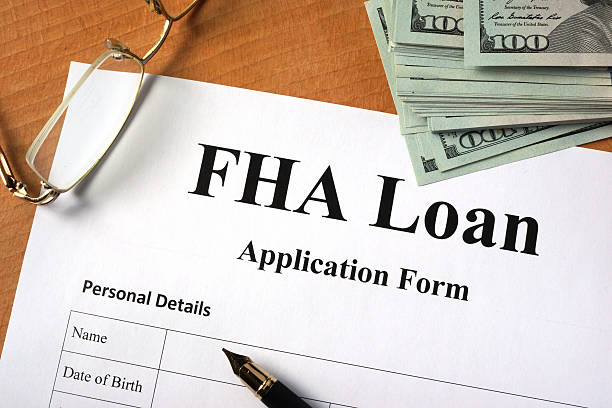When buying or selling a home, one financing option that often goes overlooked is an assumable mortgage. An assumable mortgage allows a buyer to take over the seller’s existing mortgage with its original interest rate and terms. This can be an attractive option, especially when interest rates have risen significantly since the seller first purchased the home. However, assumable mortgages come with unique advantages and potential drawbacks. Here’s a guide on what an assumable mortgage is, how it works, and when it might be a smart choice for buyers and sellers.
1. What is an Assumable Mortgage?
An assumable mortgage is a type of home loan that allows a buyer to “assume” or take over the seller’s mortgage. The buyer then becomes responsible for the remaining loan balance, interest rate, and terms originally set in the mortgage contract. This means that instead of securing a new mortgage with a current (and likely higher) interest rate, the buyer can adopt the existing mortgage at the original, potentially lower, rate.
Only certain types of mortgages are assumable, primarily government-backed loans like FHA, VA, and USDA loans. Conventional loans are typically not assumable unless explicitly stated in the loan terms, as they usually have a “due-on-sale” clause, which requires full repayment of the mortgage upon sale of the property.
2. How Does an Assumable Mortgage Work?
Assuming a mortgage involves several steps, including qualifying for the loan and navigating the terms of the existing mortgage.
A. Qualification Process
For an assumable mortgage, the buyer must qualify with the original lender just as they would for a new mortgage. The lender assesses the buyer’s creditworthiness, income, and debt-to-income (DTI) ratio to ensure they’re capable of making payments. Even though the buyer is taking over an existing loan, they must still meet the lender’s criteria to finalize the assumption.
B. Loan Balance and Down Payment
When assuming a mortgage, the buyer typically needs to cover the difference between the home’s current market value and the remaining balance of the mortgage. For example, if the seller’s mortgage balance is $200,000 but the property’s market value is $250,000, the buyer would need to pay the $50,000 difference, either through a down payment or a separate loan.
C. Fees and Costs
While assumable mortgages can save buyers on interest, there are fees involved, such as assumption fees or processing fees. These costs vary by lender but are generally lower than the fees associated with taking out a new mortgage. Buyers should consult the lender to understand the specific fees and ensure they factor them into their budget.
3. Types of Assumable Mortgages
The three main types of assumable mortgages are FHA, VA, and USDA loans. Here’s a breakdown of each:
A. FHA Loans
FHA loans, insured by the Federal Housing Administration, are assumable as long as the buyer meets the lender’s credit and income requirements. FHA loans typically have competitive interest rates and require mortgage insurance premiums, which buyers should factor into the cost.
- Eligibility: Buyers do not need to be first-time homebuyers or meet specific residency requirements to assume an FHA loan, making it a flexible option.
B. VA Loans
VA loans, backed by the Department of Veterans Affairs, are another assumable option but come with specific conditions. VA loans are intended for veterans, active-duty service members, and certain eligible surviving spouses, but non-military buyers can also assume VA loans if the lender allows it.
- VA Entitlement Considerations: When a non-veteran assumes a VA loan, the original borrower’s VA entitlement (the portion of the loan guaranteed by the VA) remains tied to the property until the loan is paid off or refinanced. This can limit the original borrower’s ability to use their VA benefits for future loans.
C. USDA Loans
USDA loans, designed for rural and suburban homebuyers with low to moderate incomes, are also assumable. The U.S. Department of Agriculture guarantees these loans, and they’re particularly beneficial for those looking to buy in eligible rural areas.
- Eligibility: USDA loan assumptions are typically restricted to buyers who meet the program’s income requirements and are purchasing the property as their primary residence.
4. Benefits of an Assumable Mortgage
Assumable mortgages offer several advantages, making them an attractive option for both buyers and sellers under the right circumstances.
A. Lower Interest Rates
One of the most significant benefits of an assumable mortgage is the ability to take on an existing loan with a lower interest rate. If rates have increased since the original loan was issued, the buyer can save substantially over the life of the loan by assuming a lower-rate mortgage rather than securing a new one at a higher rate.
B. Reduced Closing Costs
Assumable mortgages often come with lower closing costs compared to new mortgages, as they don’t require as many fees or services, such as new loan origination fees or appraisal fees. This can be appealing to buyers who want to minimize upfront costs.
C. Potential Competitive Advantage for Sellers
For sellers, offering an assumable mortgage can make their property more attractive in a high-interest-rate market. A buyer looking at a 6% market rate may find a home with an assumable 3% rate very appealing, making it easier for the seller to negotiate a favorable sale.
5. Potential Drawbacks of an Assumable Mortgage
While assumable mortgages offer advantages, there are some limitations and risks to consider.
A. Down Payment Requirement
The buyer may need a large down payment to cover the difference between the home’s market value and the remaining mortgage balance. This can be challenging for buyers without substantial cash reserves or access to other financing options.
B. Limited Availability
Since assumable mortgages are primarily available through FHA, VA, and USDA loans, they’re not an option for every property or buyer. Conventional loans, which make up a significant portion of the mortgage market, are generally not assumable due to the due-on-sale clause.
C. Mortgage Insurance
FHA and USDA loans require mortgage insurance, which may not be removable, depending on the loan terms and amount. Buyers should factor in these ongoing costs when deciding if an assumable mortgage is the right choice.
D. Risk of VA Entitlement Constraints
For VA loans, a non-veteran assuming the loan can impact the original borrower’s VA entitlement, limiting their future borrowing capacity with VA loans. This can be a deterrent for veterans looking to sell their homes to non-veterans.
6. Should You Consider an Assumable Mortgage?
Whether or not an assumable mortgage is a good fit depends on your unique situation, the market conditions, and your financial goals. Here are some scenarios where an assumable mortgage might be advantageous:
- High-Interest-Rate Environment: If current interest rates are significantly higher than the seller’s mortgage rate, assuming the loan could save you money on interest over the loan term.
- Strong Cash Reserves: If you have enough cash to cover the down payment or the difference between the mortgage balance and home price, an assumable mortgage can be beneficial.
- Veterans and Military Personnel: For VA loans, if you’re a veteran or service member, assuming a VA loan with favorable terms can be a smart financial move.
However, if you’re in a market with low-interest rates, it may be more advantageous to secure a new loan with updated terms rather than assuming an older mortgage. Additionally, if you’re unable to meet the down payment requirement for the assumption, it may be better to explore traditional financing options.
Final Thoughts
An assumable mortgage can be an excellent option for buyers and sellers, providing benefits such as lower interest rates, reduced closing costs, and a competitive advantage in a high-rate environment. However, they do come with limitations, including higher down payment requirements, limited availability, and possible ongoing mortgage insurance costs.
Before deciding on an assumable mortgage, carefully evaluate your financial situation, the current market conditions, and consult with a mortgage professional to understand the terms and requirements. By exploring this unique mortgage option, you can make a more informed decision and possibly secure a loan that meets your homeownership goals while saving on interest costs over the long run.

